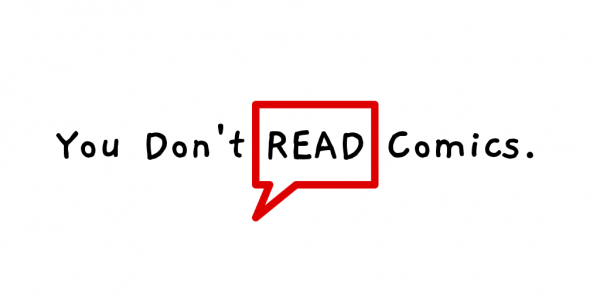Napalm Lullaby #10 // Review
Lullaby and Sponge are in free fall.(It’s okay. Really. They’re only going to fall a couple of stories. Lullaby is certain of this. That doesn’t mean that Sponge’s ankles aren’t going to hurt like hell when he hits the street. Of course...pain is all in the mind. As is so much more in Napalm Lullaby #10. Writer Rick Remender concludes a trippy, little philosophical action serial with artist Bengal. Remender and company explore strange fluctuations of reality have been fluttering through science fiction and fantasy since Philip K. Dick first hauled out his typewriter in the middle of last century...and well before that as well. It’s still nice to see it explored from a different angle on the comics page once more.
Of course...fighting crime as beloved masked heroes is all well and good, but none of it is actually real. At least...that’s what Sam thinks. He’s trying to explain that to Sarah. She’s not really in a mood to listen to it, though. She’s only trying to make things okay for Sam. She wants him to be happy. It’s not going to work like that, though. He can’t just be...happy. And maybe she can’t either, but happiness is a state of mind...just like reality.
Remender’s ending to the ten-part saga can almost feel like kind of a cop out. But it's not like he's not doing the work. I mean, there's a tremendous amount of complexity to the philosophy that he's exploring. And so it's a lot of fun getting into the depth of it in the midst of a traditional comic book action story. It's a lot of fun seeing how it all gets developed. But it seems to be lacking, some kind of fundamental inspiration that would set it apart from all of the other similar stories. This is not to say that it's not fun. It's just not quite where it needs to be in order to really justify its own existence.
Bengal has kind of a lot of ground to cover in this final 10th of the series. It's kind of weird to see the drama mix with the action in various different settings and various different ways. All of it is internally consistent. And maybe that's part of the problem. There are a few different worlds here, and they all look more or less the same on the page. Granted, the heroism of the opening sequence is slightly different from the drama in the midpoint and the final reality of the conclusion. But in order for Remender’s script to really feel like it, resonates visual, there would need to be more of a contrast between the different worlds on the page.
Alan Moore had subtly explored a very similar ground with his opening issues of “Marvelman” in the pages of Warrior Magazine back in the 1980s. Granted, that was something that was pointed in a completely different direction automatically. But it was a very similar situation with respect to reality. And heroism. And happiness. And so this doesn't feel quite as original as it should. That being said, all of the characters are a lot of fun. And this has been a true delight of a series. There’s real poetry in Remender’s plotting and dialogue. It’s been a truly fun series.









